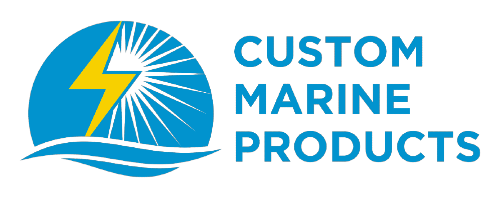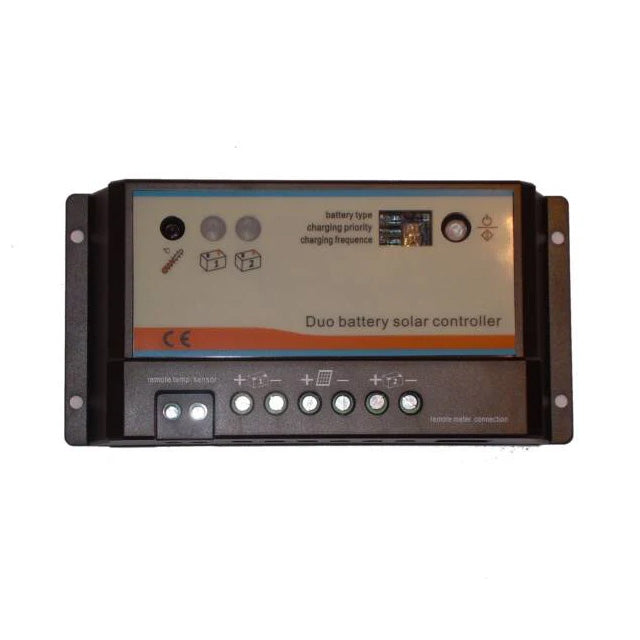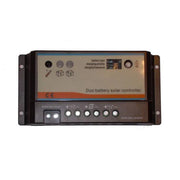20 Amp. Dual Battery Solar Controller
Not Sure How Many Solar Panels You Need?
Try our Power Consumption Worksheet.
Make a copy of the worksheet and update with your information.
Wiring Diagrams
Table: Solar Panel Wattage Range vs. Appropriate Controllers
See All Solar Panel Specifications
Federal Solar Tax Credits Extended
Federal Solar Tax Credits Extended
Good News for Solar Enthusiasts: Now Extended Through 2034!
The Inflation Reduction Act of 2022 has extended the Federal Solar Tax Credit (ITC), giving homeowners and boat owners even more incentive to go solar. This tax credit applies to your primary or secondary residence—including certain boats with living accommodations (head, galley, and bunk) registered in the U.S.
What You Need to Know
Tax Credit Rate:
- 2022–2032: 30% of total system costs
- 2033: 26% of total system costs
- 2034: 22% of total system costs
- After Jan. 1, 2035: 0%
Eligibility:
You can claim this credit if you’ve made energy-saving improvements to your home (or qualifying boat) in the U.S. during the tax year. Qualified residences include:
- Houses
- Mobile homes
- Condominiums
- Cooperative apartments
- Houseboats (with proper accommodations)
What’s Covered:
The credit applies to the cost of:
- Solar panels
- Batteries
- Inverters
- Charge controllers
- Wiring and labor costs
Retroactive Eligibility:
Systems placed in service after January 1, 2006, can qualify if the credit hasn’t already been claimed.
Unused Credits:
If your tax liability is lower than the credit, you can roll over unused amounts to future tax years.
How to Claim the Credit
- Complete IRS Form 5695:
Download the form here. Make sure to use the latest version updated in January/February of the applicable tax year.
Instructions for Form 5695. - File with IRS Form 1040:
The total from Form 5695 is entered as a line item on Form 1040. Attach both forms when filing your return.
Download IRS Form 1040.
Additional State Incentives
Many states offer additional tax incentives or rebates for solar energy systems. Check out the Database of State Incentives for Renewables & Efficiency (DSIRE) for a detailed breakdown of state-specific programs.
State Highlights
- Arizona: 25% tax credit, up to $1,000.
- Hawaii: 35% tax credit, up to $5,000.
- New York: 25% tax credit, up to $5,000.
- Oregon: Up to $6,000 in credits over four years.
- South Carolina: 25% tax credit for installation costs.
Note: State programs are subject to change. Always verify details with your state’s tax department.
Don’t Wait—Take Advantage of Solar Savings!
With the credit extended through 2034 and now covering batteries, it’s the perfect time to upgrade or install a solar system. Be sure to consult your tax advisor to maximize your savings and ensure compliance with the latest regulations.
Charging of two independent battery banks:
The owner can set charging priority between the two battery banks in steps of 10%. For example, you can decide that 90% of the solar current should go to the house battery and 10% to the start battery. When one battery bank is full all the power is redirected to the other battery.
Battery optimized charging algorithms:
• Advanced PWM four stage algorithm with bulk, absorption, float and boost (equalization) charging.
• Charging voltages are optimized for the selected lead-acid battery type (liquid, sealed or gel).
• Selectable PWM charging frequency (25, 50 or 100Hz)
• Temperature compensated charging using either a built-in temperature sensor or an optional remote sensor.
Specifications - Controller:
- For 12V and 24V systems (nominal voltage), automatically sensed. Charging voltages given below should be multiplied by 2 for 24V operation.
- Max solar current 10 A for smaller panels or 20 A for larger panels (greater than 150 watts)
- Absorption voltage 14.2V (sealed battery), 14.4V (flooded battery), 14.6V (industrial battery) or
- Boost voltage 30 min 14.4V (sealed battery), 14.6V (flooded battery), 14.8V (industrial battery)
- Float voltage 13.7V (all battery types)
- Max intrinsic power use 4 mA at night, 10 mA when charging
- Protected against short circuits, over-currents, reverse currents and lightning
- Temperature range for use : from -35°C to +55°C
- Temperature compensation -30 mV/°C
- 4 mm2 (10-12 AWG) max wire size terminals to solar panel and batteries
- 1.5 mm2 (16 AWG) terminals for optional remote temperature sensor
- RJ45 connector for cable to optional remote display
- IP22 ingression protection
- Circuit protected against high humidity
- Minimum operating voltage: 8 Volts
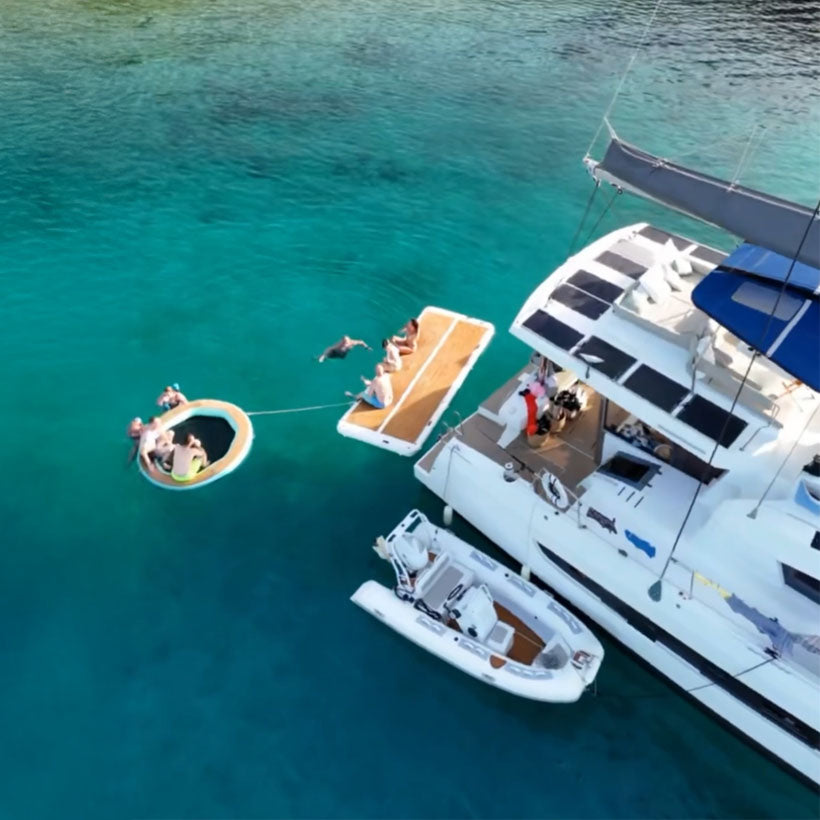
Solar System Design and Installation
We have put together a collection of helpful information for our customers on everything to help you design you perfect system and installation instructions.
Show Me How to Put Together My System
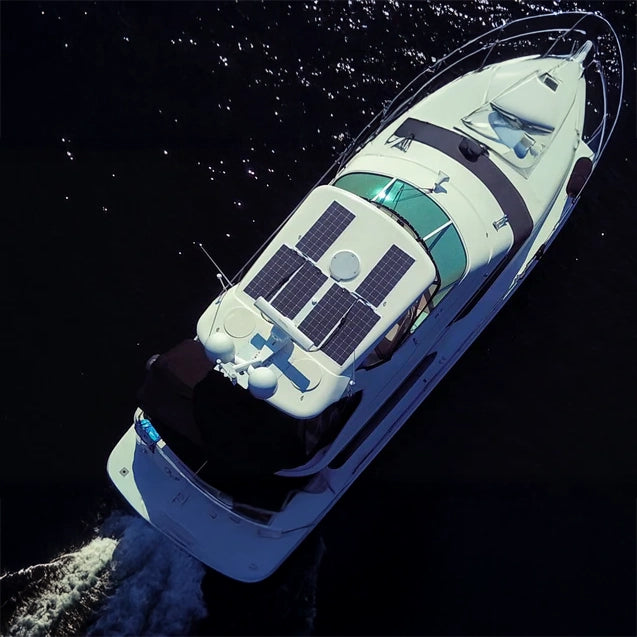
Premium Marine Solar Panels/Systems and Lithium Iron Batteries
Improve your cruising experience with the highest efficiency solar panels available.
Learn More
Popular Collections
- Your collection's name
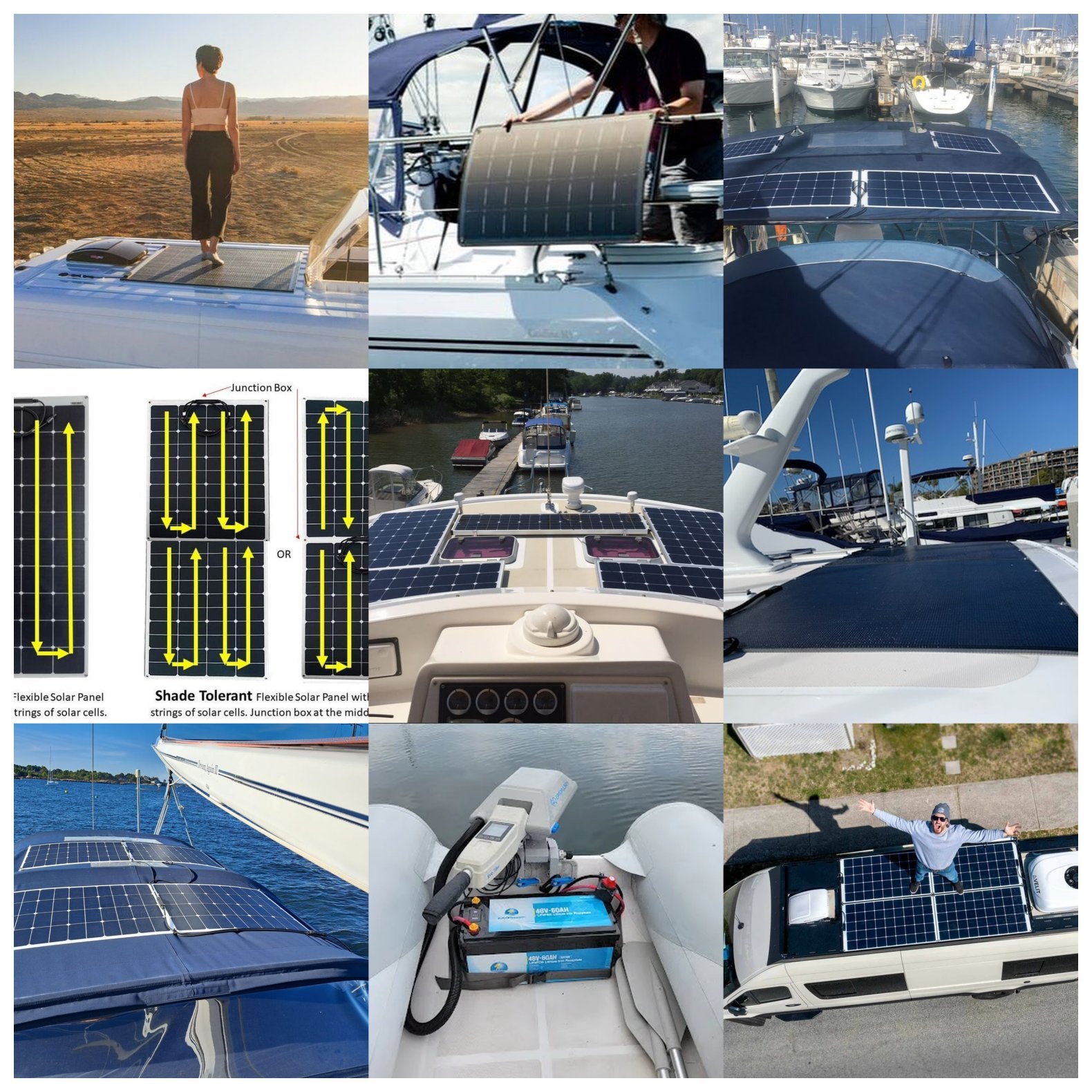
Marine Solar Panels
- Your collection's name
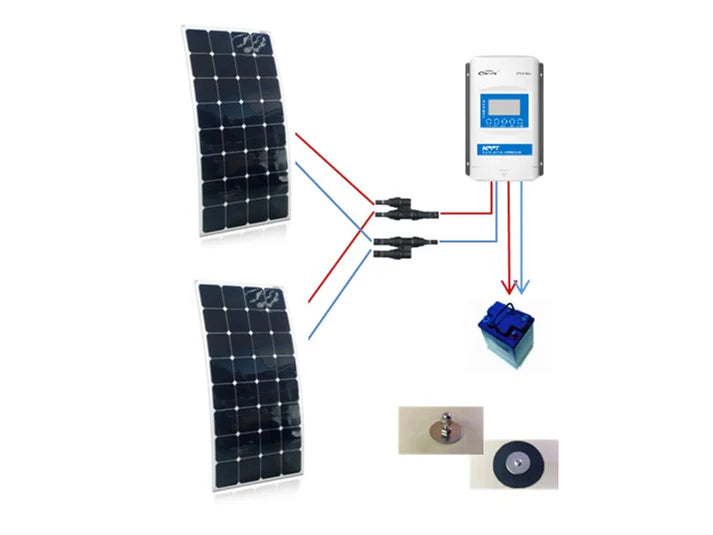
Solar System Kits
- Your collection's name
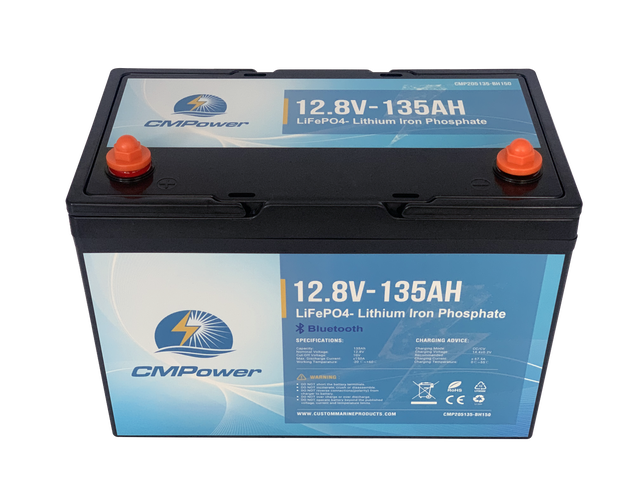
LiFePO4 (Lithium Iron Phosphate) Marine Batteries
Shipping
Products ship day after payment domestically. Free shipping on orders over $250 applies to Lower 48 US states only. International takes longer. We do not add tariff charges. Call for pricing.
Custom Designs & Custom Made Panels Available on Request
Our engineers will work with you to design a solar system specific to your needs including Lithium Batteries if you like. (Batteries are 10% off w/ solar system purchase).
If you'd like a custom solar panel, we can do it at $10/watt, more info here: Custom Solar Panels
Call Us: 248-712-1526
Federal Solar Tax Credit
💡 Did you know? You may qualify for a 30% Federal Solar Tax Credit on your marine solar system.
👉 Learn More
